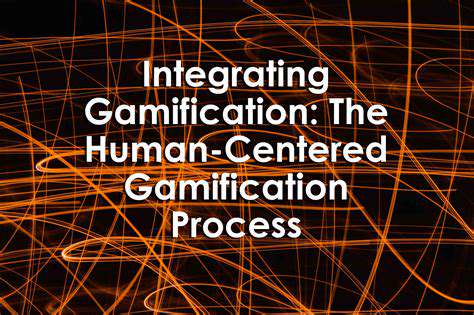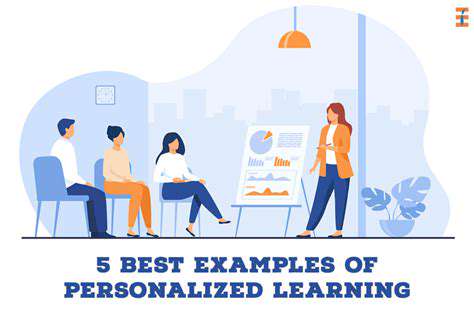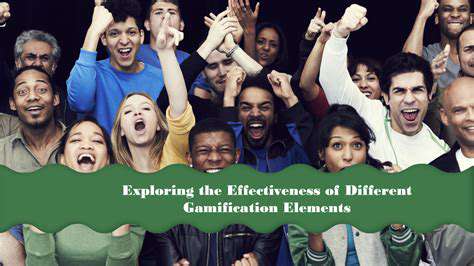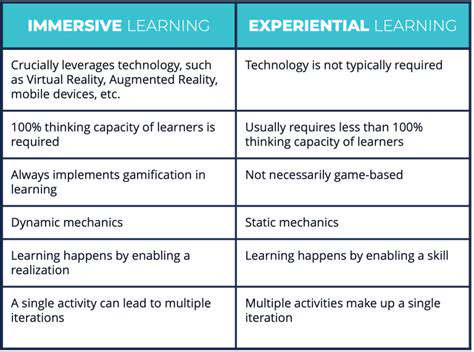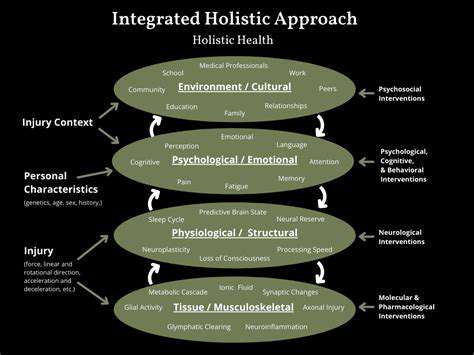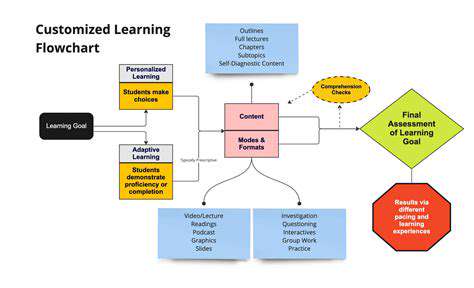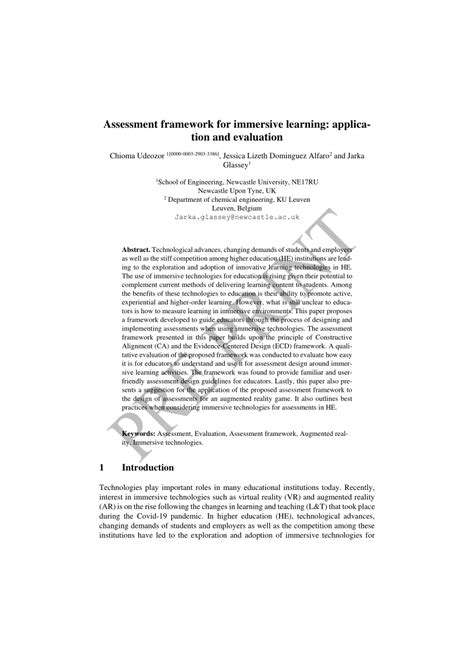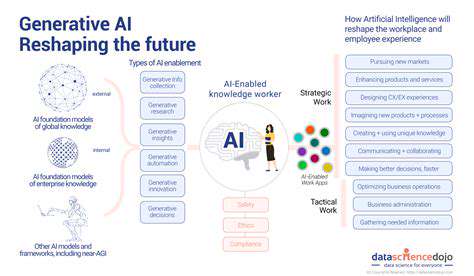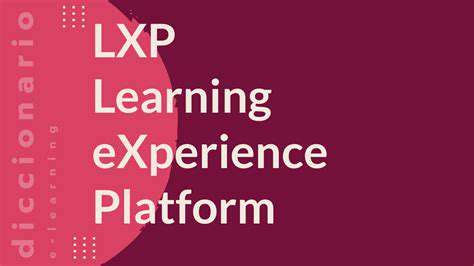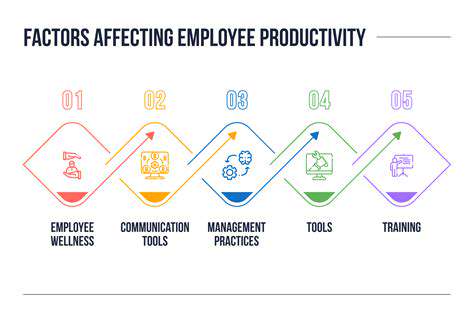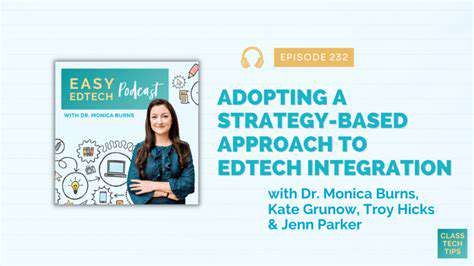AI for Special Education: Tailoring Support to Individual Needs
Armed with detailed insights about their students, educators can craft learning plans that feel personally relevant. These aren't generic templates but living documents that change as the student grows. A plan might start with heavy visual supports for a struggling reader, then gradually introduce more text as skills develop.
The magic happens when students recognize their plan reflects their unique way of thinking. This recognition builds academic confidence in ways standardized approaches never could. Suddenly, challenges become puzzles to solve rather than obstacles to fear.
Addressing Specific Learning Disabilities and Challenges
For students with dyslexia, technology can be transformative. Text-to-speech tools allow access to grade-level material while reading skills develop. Similarly, speech-to-text assists those with dysgraphia in expressing complex ideas without being hampered by handwriting struggles.
The key is early identification paired with thoughtful intervention. When a third grader gets the right supports for their ADHD, they're not just succeeding in third grade—they're building skills that will serve them through high school and beyond.
Enhancing Collaboration and Communication
Modern platforms create bridges between all the adults in a child's educational journey. When a speech therapist notes progress with certain sounds, the classroom teacher can reinforce those sounds during reading lessons. Parents gain visibility into school strategies so they can provide consistent support at home.
This shared understanding prevents students from feeling pulled in different directions. Instead, they experience a cohesive network all working toward the same goals.
Adapting Instruction in Real-Time
Imagine a reading app that notices a student consistently mispronounces certain vowel combinations. Instead of continuing with the planned lesson, it automatically provides extra practice with those sounds. Meanwhile, the teacher receives an alert suggesting small group instruction for students showing similar patterns.
This responsiveness keeps learning moving forward without leaving anyone behind. Students get help precisely when they need it most.
Creating Inclusive and Supportive Learning Environments
When classrooms honor neurodiversity, all students benefit. The child with autism who uses noise-canceling headphones during tests isn't seen as needing special treatment—they're recognized as using smart strategies. Their classmates absorb this acceptance, creating a culture where differences become strengths.
Inclusion isn't about making exceptions—it's about designing experiences where everyone can participate fully. That's when true learning happens.
Personalized Learning Plans and Adaptive Curricula
Personalized Learning Plans
Personalized learning plans represent a seismic shift in special education, moving away from deficit-focused models toward strength-based approaches. These living documents evolve with the student, incorporating interests that boost engagement while systematically addressing challenges. A plan might leverage a student's passion for dinosaurs to teach math concepts, then pivot to space themes as interests change.
Advanced algorithms now assist in crafting these plans, analyzing thousands of data points to suggest optimal learning sequences. The human touch remains essential—teachers use these suggestions to create plans that resonate emotionally as well as academically.
Adaptive Curricula
Traditional curricula often force students to march in lockstep regardless of readiness. Adaptive systems change that paradigm entirely. When a student masters fractions quickly, the system presents more challenging applications. If geometry concepts prove difficult, it provides foundational review without making the student feel behind.
This fluidity respects the natural ebbs and flows of the learning process. Students experience challenge without frustration and support without stigma.
AI-Driven Assessment and Feedback
Modern assessment tools do far more than score right and wrong answers. They analyze hesitation patterns, track which hints prove most effective, and even detect subtle signs of disengagement. This granular data allows for feedback that's both precise and encouraging.
A writing platform might compliment a student's improved paragraph structure while gently suggesting stronger verb choices. This balanced approach builds skills without damaging confidence.
Tailoring Instruction for Diverse Needs
Consider a classroom with students who have dyslexia, ADHD, and auditory processing disorder. Instead of presenting material one way for all, the teacher provides text with dyslexia-friendly fonts, movement breaks for the ADHD student, and visual organizers for the auditory challenges. Meanwhile, the student with autism has predictable routines clearly displayed.
This level of individualization was once impossible—now it's increasingly expected. As tools improve, so do our ability to honor each learner's needs.
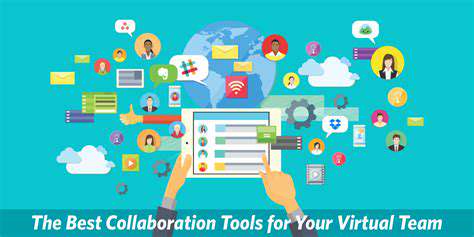
Data security remains paramount in autonomous vehicle systems, where breaches could compromise not just personal information but physical safety. The interconnected nature of these systems creates both vulnerabilities and opportunities—while hackers might exploit weaknesses, the same connectivity allows for rapid security updates across entire fleets.
Automated Assessment and Feedback Mechanisms
Automated Assessment Tools in Special Education
Gone are the days when assessment meant stressful standardized tests. Today's tools gather data through everyday activities—how a student navigates an educational game, which math problems they revisit, even the questions they ask during digital lessons. This ongoing assessment creates a comprehensive picture without test anxiety skewing results.
The most effective systems flag potential issues early, allowing intervention before small gaps become chasms. Teachers receive alerts when patterns suggest emerging difficulties, whether academic or social-emotional.
Personalized Learning Pathways
These pathways function like educational GPS systems. When a student takes a wrong turn (misunderstands a concept), the system recalculates the route rather than letting them get lost. It might offer alternative explanations, suggest prerequisite review, or connect the concept to known interests.
This responsiveness keeps students in their optimal learning zone—challenged but not overwhelmed. Motivation stays high because success feels attainable.
Real-Time Feedback for Educators
Dashboard alerts inform teachers that half the class struggled with a science concept, prompting an impromptu hands-on demonstration. Another alert shows three students ready for enrichment, allowing the teacher to provide advanced materials immediately rather than days later.
This immediacy transforms teaching from reactive to proactive. Educators address needs before they become apparent through failed quizzes or frustrated students.
Data-Driven Intervention Strategies
Pattern recognition algorithms spot trends human observers might miss—like how a student's comprehension drops after 20 minutes of seatwork, suggesting needed movement breaks. Or that a child performs significantly better on math facts when presented in game format rather than flashcards.
These insights allow for interventions that feel natural rather than punitive. The student gets what they need without feeling singled out.
Improved Student Engagement and Motivation
When students see their progress visualized in engaging formats—experience points, learning trees, or skill mastery maps—they become active participants in their growth. A history timeline that fills in as they master concepts provides tangible evidence of their hard work.
This gamification taps into intrinsic motivation without relying on extrinsic rewards. The joy of visible progress becomes its own reinforcement.
Accessibility and Scalability
These tools democratize quality education. A rural school with limited special education staff can access the same sophisticated supports as well-funded urban districts. English language learners receive instant vocabulary support, while students with physical disabilities engage through adaptive interfaces.
Technology becomes the great equalizer, ensuring every student gets what they need to thrive regardless of zip code or diagnosis.


